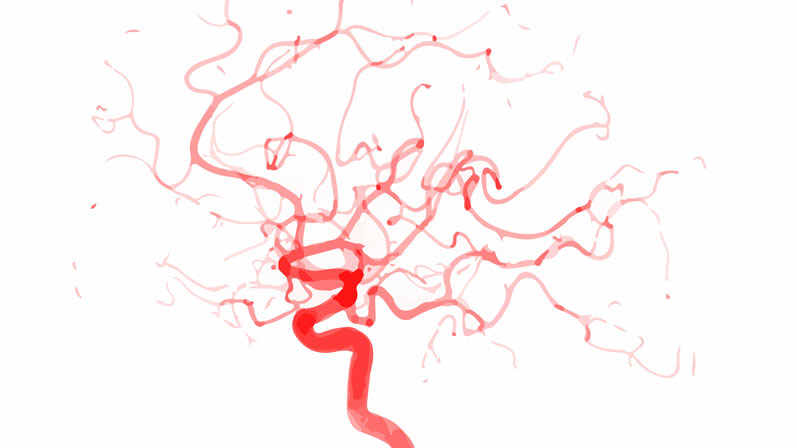A Discussion of the Use of Tenecteplase for Ischemic Stroke
LIVE EVENT – June 10, 2021
Thank you to our panel for sharing their experience transitioning to TNK:
-
- Leslie Hamilton, PharmD, FCCP, FCCM, BCPS, BCCCP, Associate Professor of Clinical Pharmacy and Translational Science
- Jennifer Henry, MSN, RN, CNRN, SCRN, NVRN-BC, CSC Director
- Brian Wiseman, MD, CSC Medical Director
- Jodi Mueller-Hussein, BSN, RN, SCRN, Stroke Program Coordinator
- Sara Engkjer, MA, RN, Manager Cerebrovascular Services
- Kathrine Carlson, RN, BSN, CNRN, Regional Stroke Program Coordinator
- Robin Jones, MSN, RN, CNRN, SCRN, NE-BC, Stroke Program Manager, CSC
- Dr. Alex Schneider, CSC Medical Director
Their programs are described below:
- 680-bed academic medical center; CSC, annual volume 1000 acute ischemic strokes; switched to TNK in April 2020; has administered ~200 doses; 5 months from discussion to transition
- 9-hospital system with 2 CSCs; busiest CSC annual volume 600+ acute ischemic strokes; switched to TNK in February 2021; has administered ~34 doses
- 800-bed community teaching hospital; CSC; >800 annual code stroke activations; switched to TNK in December 2020; has administered >60 doses
These are the significant talking points during the discussion.
- Transition during COVID – One hospital transitioned in April 2020 and found IV push administration without the need for an infusion pump to be a significant benefit given the added precautions for COVID-19.
- Rationale for transitioning to Tenecteplase (TNK) – All referenced non-inferiority data in the EXTEND IA trial (3/2018), the meta-analysis of 5 randomized trials (Saver et al 7/2019) and the AHA Guidelines for AIS (10/2019). Other rationale included the opportunity to reduce door-to-needle and door-to-groin times and door-in-door-out times.
- Approvals – It is a multi-disciplinary effort including, but not limited to, stakeholders in neurology, ED, neuro intervention, neuro critical care, pharmacy, neurosurgery, nursing practice leaders, clinical educators, operational leaders, P&T committee, medical executive committee, etc. Each hospital had chosen a 25 mg dose (0.25 mg/kg up to 25 mg) as the most useful dose.
- Real-world implications – Some sharing their experience noted TNK is a quick, single bolus with a less complex administration (IV push). The use of TNK eliminates an infusion pump and associated pump issues. With a quicker hand-off, programs reported an improvement in time to intervention and door-in-door-out times for patients being transported for intervention. With that said, one hospital reported adding a hand-off sheet to facilitate interfacility transport and communication to receiving teams. One potential safety risk is the lack of visual cue that the patient received a thrombolytic with TNK, and participants felt the need to increase awareness during handoff. One hospital that already had door-to-needle times in the low 20 minutes was concerned about delays that might arise due to the decision not to pre-mix TNK. With an added focus on workflow, they were able to maintain their short door-to-needles times. Previously they pre-mixed Alteplase but do not pre-mix TNK as Genentech doesn’t replace undelivered doses. (See “Mixing/Premixing TNK” below.) Most identified cost reduction as real-world impact of their transition as TNK is estimated to cost as much as $3,000 less than Alteplase.
- Outcomes – While one hospital indicated they had not seen functional outcome differences compared to alteplase, all are monitoring complications such as angioedema and symptomatic ICH closely, comparing their TNK experience to historical alteplase patients. The group is referred to this recent article: Stroke. 2021;52:1087–1090 Routine Use of Tenecteplase for Thrombolysis in Acute Ischemic Stroke Cathy S. Zhong, et al.
- Informed consent – Informed consent for both TNK and alteplase seems to be organization-specific with participating hospitals reporting a verbal consent process for TNK.
- Implementation of new TNK protocols –Two of the hospitals presenting transitioned all of their system hospitals at one time! Once approved by various committees, targeted and widespread education was conducted for anyone ordering, administering or caring for a patient receiving Tenecteplase using huddles, videos, handouts, competency skills stations, etc. Implementation involved changes in policies, pathways, workflows and required significant time and effort to prepare. The same scheduled post-alteplase vital signs and neuro checks were maintained for Tenecteplase. Some reported needing to train staff on both alteplase and TNK since they receive patients from outside facilities. One hospital noted a few issues with transfers out of their system to hospitals not using TNK. They provide additional resources and support regarding their policies and procedures.
- Clinical informatic support required – The significant amount of effort required to change or add terminology in order sets and policies was not anticipated. For those transitioning completely to Tenecteplase, the need to keep synonyms within EPIC and searches proved important. For example, if alteplase was typed in, they wanted the Tenecteplase order to come up. Others changed their terminology to the more generic term, “thrombolytic.” One hospital created panels within EPIC to build out their treatment protocols. When the panels come up for an ED stroke patient, for example, Tenecteplase is built in the treatment panel for nursing orders, treatments, etc. They also built in the medications for treating complications such as angioedema and hypertension in the panel for providers to choose. Another hospital created a panel to link post thrombolytic monitoring orders to the medication order. Rather than adding an order to flush the line, one hospital chose to utilize nursing and medication administration instructions within EPIC to include a normal saline flush before and after infusion.
- Use of kits or tackle boxes – Most participants reporting using TNK kits, some with medications and others with supplies but no meds. At one hospital, Alteplase was routinely mixed at the bedside (ED and IP) and code stroke boxes were updated for TNK.
- Mixing/pre-mixing TNK – TNK takes less time to mix/dilute than alteplase. Because TNK is not FDA-approved for acute ischemic stroke, Genentech does not currently replace TNK if pre-mixed and not administered. One hospital stopped premixing and worked diligently to maintain their excellent door-to-needle times.
Thank you for joining the conversation!
Stroke Challenges, Co-founders
Sarah Livesay, DNP, RN, ACNP-BC, CNS-BC
Debbie Hill, BS, FAHA
View our eBooks and newly released On-demand Webinars
Sign up for our newsletter: https://strokechallenges.com/blog/





 Stroke Challenges
Stroke Challenges